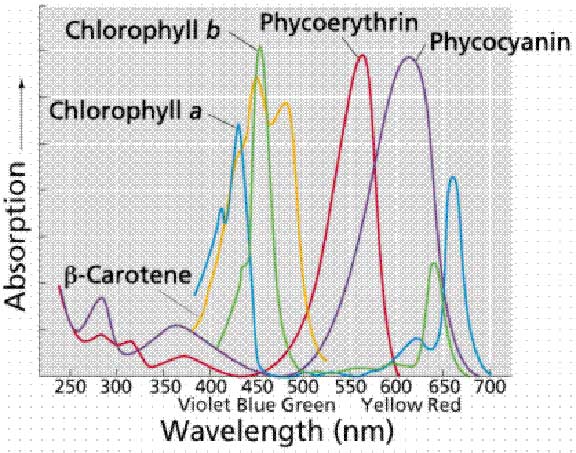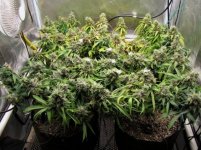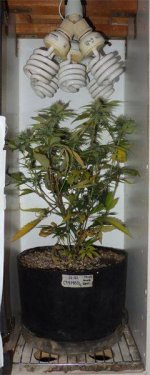-
Happy Birthday ICMag! Been 20 years since Gypsy Nirvana created the forum! We are celebrating with a 4/20 Giveaway and by launching a new Patreon tier called "420club". You can read more here.
-
Important notice: ICMag's T.O.U. has been updated. Please review it here. For your convenience, it is also available in the main forum menu, under 'Quick Links"!
You are using an out of date browser. It may not display this or other websites correctly.
You should upgrade or use an alternative browser.
You should upgrade or use an alternative browser.
The VolksLED - The People's DIY Fixture
- Thread starter rives
- Start date
Has anyone built a strip of LEDs around three sides of a tent - maybe slanted up and staggered LEDs ? I want to know if hat would make the popcorn buds grow to a decent size and weight...
If you want the popcorn to grow you need to scrog it, it is a little more time consuming but way way less expensive.
Peace
Today you can buy led tube lights (2-4ft) that should be excellent for side lighting- and quite possibly top lighting.
I am looking into adding some WW to finish flowering
In the meantime, this is what I did
View attachment 225643
I am looking into adding some WW to finish flowering
In the meantime, this is what I did
View attachment 225643
budlover123
Member
I'm not trying to be a dick, but a 108-watts power draw for 9 LEDs at 900mA is pretty inefficient. I've seen modern LED drivers powering 36 LEDs at 700mA and only use around 80-92 watts.
http://lightput.com/forum/viewtopic.php?f=4&t=520&start=10#p861
the kill-a-watt meter tests are in the middle somewhere
Is there something about the design I'm missing? It seems like that dimmer hardware might be a big power drain. It looks like either that or those drivers are not the greatest.
http://lightput.com/forum/viewtopic.php?f=4&t=520&start=10#p861
the kill-a-watt meter tests are in the middle somewhere
Is there something about the design I'm missing? It seems like that dimmer hardware might be a big power drain. It looks like either that or those drivers are not the greatest.
LargePrime
Member
rives;
Looking at the chart below, quoted earlier by vukman. It seems that narrow band LEDs could be selected to just hit the peaks. Would this not give our LEDs power efficiency over broad spectrum LEDS? assuming some sort of supplemental lighting.
Awaiting your thoughts.

Looking at the chart below, quoted earlier by vukman. It seems that narrow band LEDs could be selected to just hit the peaks. Would this not give our LEDs power efficiency over broad spectrum LEDS? assuming some sort of supplemental lighting.
Awaiting your thoughts.
I'm not trying to be a dick, but a 108-watts power draw for 9 LEDs at 900mA is pretty inefficient. I've seen modern LED drivers powering 36 LEDs at 700mA and only use around 80-92 watts.
http://lightput.com/forum/viewtopic.php?f=4&t=520&start=10#p861
the kill-a-watt meter tests are in the middle somewhere
Is there something about the design I'm missing? It seems like that dimmer hardware might be a big power drain. It looks like either that or those drivers are not the greatest.
Sorry I missed this when it was posted. Perhaps you missed the part that said that these are 10 watt leds. There are actually 4 LEDs per MCPCB, for a total count of 36, and the total wattage figure includes the fan power supply and fan loading. Considering that I'm driving the chips 28% harder than your example, making them equivalent would take your figures from 80-92w up to 103-118w. The LEDEngin chips are a long ways from being the most efficient ones available, but they do build a nice selection of high-wattage LEDs. I was more concerned about making the fixture easy for people to put together than trying to reach the pinnacle of efficiency, and keeping the number of LEDs down that had to be mounted and wired was a large factor in reaching that goal. The "dimmer circuitry" is merely a potentiometer feeding Meanwell's circuit. There are probably some more efficient drivers available, but I think that the Meanwells are on the higher end of what's available, as well as being dead reliable.
I can happily report after using this for a while now that this thing veg's better than any other light source that I've ever used.
rives;
Looking at the chart below, quoted earlier by vukman. It seems that narrow band LEDs could be selected to just hit the peaks. Would this not give our LEDs power efficiency over broad spectrum LEDS? assuming some sort of supplemental lighting.
Awaiting your thoughts.
View Image
If we knew exactly what the plants required, then this would certainly be the case. My experience with LEDs, and more recently the 315w CDM lamp, leads me to think that we are missing something when just trying to target the various peaks. I've used my own DIY fixtures as well as the Lumigrow ES330, and while they all grow very nice plants at a reasonable level of power efficiency, they fall far short of what the 315w CDM can do with less power over a greater footprint. I am currently running an experiment with a single 315 in a 4x4 tent (just under 20w/sq.ft.) and my preliminary impression is that the yield will be close to double my best run under LEDs. I will know in a couple of weeks or so.
This all leads me to think that we are missing something when trying to quantify a plant's requirements from lighting. It seems a little counter-intuitive to think that a plant that has evolved for millennia under full-spectrum lighting really only uses a couple of tightly-limited portions of that spectrum. The other thing is the aspect of our perspective - I hate that fucking martian color that the NASA paradigm utilizes. It's impossible for me, having evolved under full-spectrum light, to enjoy my time with the plants or troubleshoot what is going on with them when they are under a red-blue mix.
Last edited:
The technical name is "wireway", but is commonly referred to in the trade as "gutter". It comes in a variety of widths, depths, and lengths. Below is a link to what I used. The end plates are ordered separately.
https://www.platt.com/platt-electri...r/Hoffman/F44T124GVP/product.aspx?zpid=423839
https://www.platt.com/platt-electri...r/Hoffman/F44T124GVP/product.aspx?zpid=423839
10 watt junk Save the 10 Watt diodes for street lamps. They have no business going into grow lights as they are much more expensive on a $/Watt basis, give off more heat and completely defeats the whole purpose of growing efficiently with LEDs.
The ideal size for LED grow lights are the 3 Watt diodes. The 3 watt diode provides the ideal balance of canopy penetration without having excess heat problems that come with larger diodes. With 3 watt diodes, a grow light is able to penetrate up to 5 feet past the plant’s canopy which is what is needed for commercial indoor growers.
What are the drawbacks of using 5Watt, 10Watt or lareger diodes in a grow light? The first issue is heat dissipation. As the diode size increases, so does the amount of heat that needs to be dissipated by the diode chip. Larger wattage diodes need larger heat sinks to dissipate the heat that they give off. This results in heavier and bulkier lights. The second issue is of chip density. Since the 5Watt and 10Watt diodes give off more heat, they must be spaced further apart to avoid thermal failure. They cannot be packed as densely as the 3 watt chips. The result is a less densely packed grow light that is heavier and bulkier.
The third major drawback of the 5Watt and 10Watt diodes is that they are too expensive. They cost more and are also more expensive on a $/watt and $/ square foot basis. A quick analysis shows that it is not worth paying a premium to have larger diodes in LED grow lights. They are unnecessary for indoor growers and come at a burdensome cost of increased prices, less densely packed network of diodes, and bulkier grow lights.
Bigger is not always better. When it comes to the question of the ideal diode size for indoor LED grow lights, the 3 watt diode is the smartest choice for any indoor growing project.
The ideal size for LED grow lights are the 3 Watt diodes. The 3 watt diode provides the ideal balance of canopy penetration without having excess heat problems that come with larger diodes. With 3 watt diodes, a grow light is able to penetrate up to 5 feet past the plant’s canopy which is what is needed for commercial indoor growers.
What are the drawbacks of using 5Watt, 10Watt or lareger diodes in a grow light? The first issue is heat dissipation. As the diode size increases, so does the amount of heat that needs to be dissipated by the diode chip. Larger wattage diodes need larger heat sinks to dissipate the heat that they give off. This results in heavier and bulkier lights. The second issue is of chip density. Since the 5Watt and 10Watt diodes give off more heat, they must be spaced further apart to avoid thermal failure. They cannot be packed as densely as the 3 watt chips. The result is a less densely packed grow light that is heavier and bulkier.
The third major drawback of the 5Watt and 10Watt diodes is that they are too expensive. They cost more and are also more expensive on a $/watt and $/ square foot basis. A quick analysis shows that it is not worth paying a premium to have larger diodes in LED grow lights. They are unnecessary for indoor growers and come at a burdensome cost of increased prices, less densely packed network of diodes, and bulkier grow lights.
Bigger is not always better. When it comes to the question of the ideal diode size for indoor LED grow lights, the 3 watt diode is the smartest choice for any indoor growing project.
Ah, my new pet troll!
Nice cut & paste, Doc, but the information that you are copying is several years old. This looks like LEDGirl's musings, and her company went to COB's quite a while back.
But to deal with HER points, the chips are a bit more expensive than the lower wattage ones, but save in labor and overall footprint. If you want an easily assembled, powerful light in a small package, these work quite well. A properly designed heat sink deals with the heat - this fixture has been running 20 hours a day for the last 2+ years, and still works just fine. In fact, it works better than any veg light that I've found.
Nice cut & paste, Doc, but the information that you are copying is several years old. This looks like LEDGirl's musings, and her company went to COB's quite a while back.
But to deal with HER points, the chips are a bit more expensive than the lower wattage ones, but save in labor and overall footprint. If you want an easily assembled, powerful light in a small package, these work quite well. A properly designed heat sink deals with the heat - this fixture has been running 20 hours a day for the last 2+ years, and still works just fine. In fact, it works better than any veg light that I've found.
Its also worth noting that while some of the COB units might not have the efficiency edge in all regards, plants use intense light sources more efficiently than more diffuse sources, same overall photons or not. There's a plateau to this, but this simple fact is a big reason a lot of people are still growing with HID, especially with tall plants. COB have a big intensity edge.
I should be more specific. Chlorophyll works more efficiently with added intensity, at least up to a point(aka Photosynthesis-irradiance curve). Cannabis is a full sun plant more or less, especially sativa dominant strains.
Please explain where would the added intensity of using 10 watt ?? for one the angle is 170 - 180 degree so with that said intensity is diminished as light is being spread out rather then 2 - 3 watt Diodes where they are 90 degree and put the light down on the plant here simple Rives so called 12 + oz Believe it or not hahaha i prefer NOT grow 10 watt 180 degree lens crapI should be more specific. Chlorophyll works more efficiently with added intensity, at least up to a point(aka Photosynthesis-irradiance curve). Cannabis is a full sun plant more or less, especially sativa dominant strains.
and buddys 8 oz same grow space 250 watts 3 watt 90 degree lens
can you see a difference you be blind not to
 both 4 plant
both 4 plantAttachments
RedBeardy5
Active member
What's nice about the 5 watt lights is they really run at about 4 watts to maximize the LEDs life, correct me if I'm wrong. Im personally looking at 10 watt right now.
The wattage designations for LEDs are kind of confusing because they are more of a "family" designation than what the actual power is. They are frequently underpowered by the LED fixture manufacturers because they don't want to spend the money to adequately cool them. LEDs can actually be driven much higher than their nominal rating, but the cooling needs get pretty exotic.
The higher wattage units are the way that I would go now.
The higher wattage units are the way that I would go now.
DrFever, I really have no idea why you're so obsessed with his claims of yield that you take it so personally. Its not like he's your supplier and you're being ripped off or something. If you don't believe in his results don't use his method.....
As for the issue of intensity, it has to do with overlap. Not all COBs have the same viewing angle either.
As for the issue of intensity, it has to do with overlap. Not all COBs have the same viewing angle either.
Latest posts
-
-
-
-
NL5xHz test comparison grow outdoor greenhouse grow
- Latest: Boob McNoob
Latest posts
-
-
-
-
NL5xHz test comparison grow outdoor greenhouse grow
- Latest: Boob McNoob





